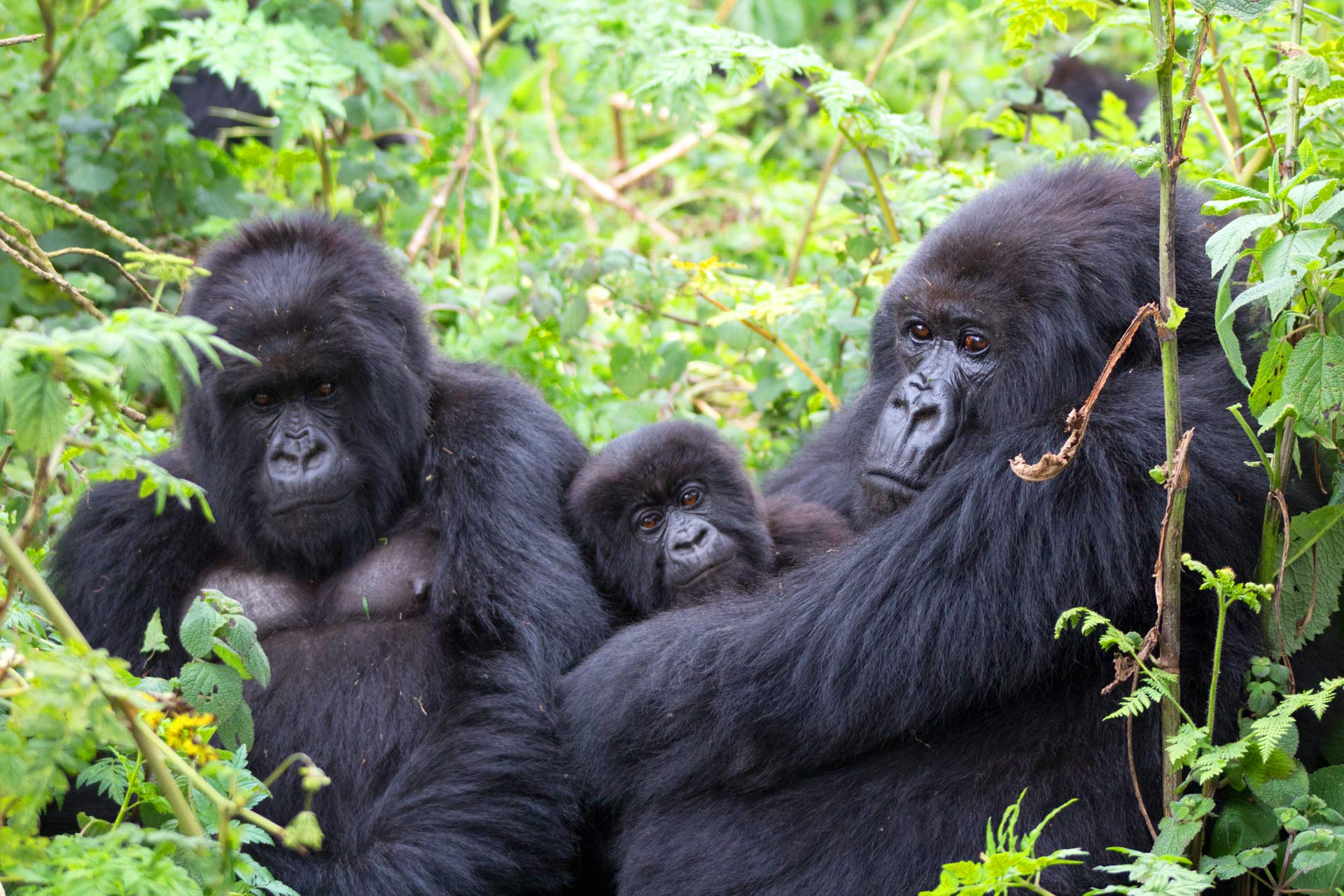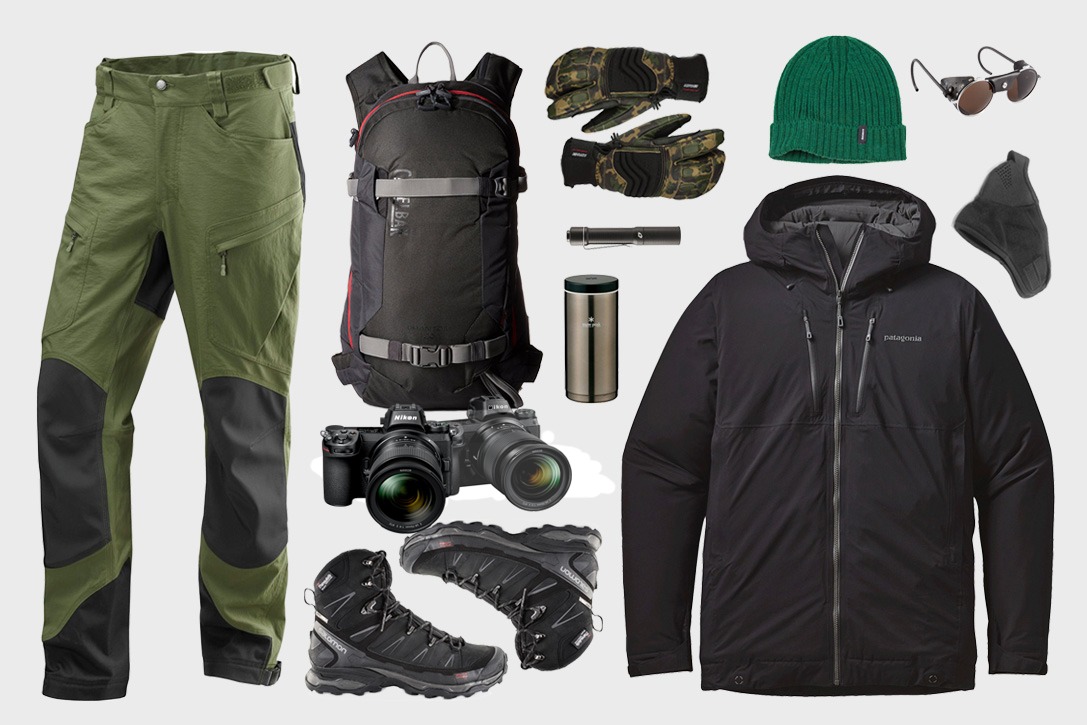Uganda, often referred to as the Pearl of Africa, is a captivating destination that offers an unparalleled blend of diverse landscapes, rich cultural heritage, and breathtaking wildlife experiences. Nestled in the heart of East Africa, Uganda is home to some of the continent’s most iconic natural wonders. This includes the magnificent gorillas that roam its misty forests. As we look forward to 2025, the allure of Uganda’s wilderness continues to grow. Also, draws adventurers, nature enthusiasts, and wildlife photographers from around the globe. This comprehensive guide delves into the heart of Uganda’s most thrilling attractions: Gorilla Safaris, wildlife tours, and the myriad of experiences that make Uganda a must-visit destination in 2025.
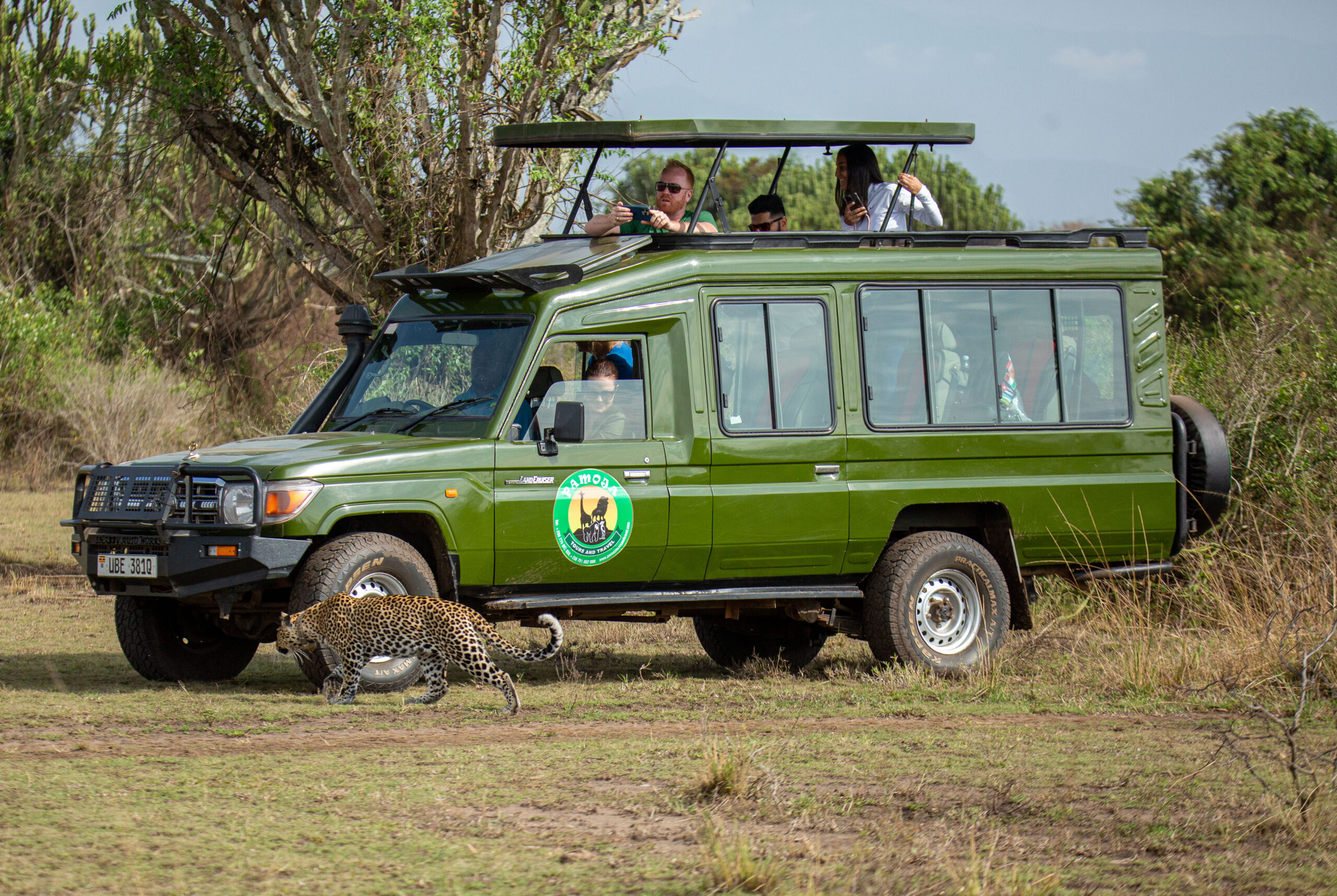
The Unforgettable Experience of Uganda Gorilla Safaris
A Unique Encounter with Mountain Gorillas
One of the most extraordinary experiences that Uganda offers is the opportunity to come face-to-face with mountain gorillas. These gentle giants inhabit the dense forests of Bwindi Impenetrable National Park and Mgahinga Gorilla National Park, which are part of the larger Virunga Conservation Area that spans the borders of Uganda, Rwanda, and the Democratic Republic of Congo. Uganda’s gorilla trekking experiences are among the most sought-after wildlife adventures in the world, offering a rare glimpse into the lives of these majestic creatures.
Mountain gorillas are critically endangered, with only about 1,000 individuals remaining in the wild. The conservation efforts in Uganda have been pivotal in increasing their numbers, making gorilla trekking not only a thrilling adventure but also a crucial contribution to the conservation of this species. In 2025, the demand for gorilla trekking permits is expected to be high, and securing a permit well in advance is essential for anyone planning to embark on this once-in-a-lifetime journey.
Bwindi Impenetrable National Park: The Heart of Gorilla Trekking
Bwindi Impenetrable National Park, a UNESCO World Heritage Site, is the crown jewel of Uganda’s gorilla trekking experiences. The park’s name is a testament to its dense vegetation and rugged terrain, which provide the perfect habitat for the mountain gorillas. Trekking through Bwindi is a challenging yet rewarding experience, as visitors traverse steep hills and thick forests in search of gorilla families.
The park is divided into four main sectors: Buhoma, Ruhija, Rushaga, and Nkuringo, each offering unique trekking experiences and varying levels of difficulty. Bwindi is home to approximately half of the world’s mountain gorilla population, and trekkers can expect to spend up to an hour observing these incredible animals in their natural habitat. The thrill of watching a silverback gorilla protectively watching over his family, or a playful baby gorilla swinging from the branches, is a memory that will last a lifetime.
Mgahinga Gorilla National Park: The Lesser-Known Gem
While Bwindi often steals the spotlight, Mgahinga Gorilla National Park is another fantastic destination for gorilla trekking. Located in the Virunga Mountains, Mgahinga is home to the Nyakagezi gorilla family, which frequently crosses the borders between Uganda, Rwanda, and the Democratic Republic of Congo. Trekking in Mgahinga offers a different kind of adventure, with the added bonus of stunning views of the volcanic mountains.
Mgahinga is also part of the larger Virunga Conservation Area, which includes Rwanda’s Volcanoes National Park and the Democratic Republic of Congo’s Virunga National Park. This region is not only home to mountain gorillas but also to golden monkeys, which are another species that visitors can track in Mgahinga. For those looking for a less crowded and more intimate gorilla trekking experience, Mgahinga is an excellent choice.
Planning Your Gorilla Safari in 2025
Securing Gorilla Trekking Permits
One of the most important steps in planning a gorilla safari in Uganda is securing a gorilla trekking permit. The Uganda Wildlife Authority (UWA) is responsible for issuing these permits, and the demand is consistently high, especially during the peak seasons of June to September and December to February. As of 2025, the cost of a gorilla trekking permit is expected to be around USD 800 per person for foreign non-residents, USD 700 for foreign residents, and UGX 300,000 for East African citizens. These permits are limited in number to ensure the sustainability of the gorilla populations and to provide a low-impact experience for visitors.
It is advisable to book your permit several months in advance to ensure availability. Many tour operators offer packages that include the cost of the permit, accommodation, and transportation, making the process more convenient. Additionally, it’s essential to consider the physical demands of gorilla trekking, as the hike can be strenuous and requires a good level of fitness. Trekking poles, waterproof clothing, and sturdy hiking boots are highly recommended to navigate challenging terrain.
What to pack for your gorilla trekking safari
Choosing the Right Time to Visit
Uganda’s equatorial climate allows for gorilla trekking year-round, but the best time to visit is during the dry seasons, which typically run from June to September and December to February. During these months, the trails are less muddy, making the trekking experience more manageable. The dry season also coincides with the peak tourist season, so planning and booking in advance is crucial.
The rainy seasons, from March to May and October to November, bring lush landscapes and fewer tourists, offering a more serene experience. However, the trails can be slippery and more challenging to navigate during these times. For those seeking a quieter adventure and who don’t mind the rain, the wet season can be an excellent choice.
Accommodations: From Luxury Lodges to Budget-Friendly Options
Uganda offers a wide range of accommodation options to suit all budgets and preferences, from luxury lodges nestled in the forest to budget-friendly campsites. In Bwindi Impenetrable National Park, visitors can choose from several lodges that provide stunning views of the forest and comfortable amenities after a long day of trekking. Some of the top luxury lodges include Buhoma Lodge, Clouds Mountain Gorilla Lodge, and Gorilla Forest Camp, which offer high-end services, gourmet meals, and private cottages.
For those on a tighter budget, there are mid-range and budget lodges such as Gorilla Mist Camp, Nkuringo Gorilla Camp, and Ruhija Gorilla Safari Lodge, which provide basic but comfortable accommodations. Most lodges in Bwindi also offer cultural experiences, such as visits to local communities, traditional dance performances, and opportunities to learn about the conservation efforts that protect the gorillas.
In Mgahinga Gorilla National Park, accommodations are more limited but equally charming. Mount Gahinga Lodge is a popular choice for those looking for a luxury stay, offering cozy bandas with views of the volcanoes. Budget travelers can opt for community-run guesthouses or campsites, which provide a more rustic experience and the chance to engage with the local Batwa community.
Exploring Uganda’s Wildlife Beyond Gorillas
Queen Elizabeth National Park: The Icon of Uganda’s Savannah
While gorilla trekking is undoubtedly a highlight of any trip to Uganda, the country offers much more for wildlife enthusiasts. Queen Elizabeth National Park, located in the western part of Uganda, is one of the most popular destinations for a classic savannah safari. The park is renowned for its diverse ecosystems, which include open grasslands, dense forests, wetlands, and lakes, all teeming with wildlife.
Visitors to Queen Elizabeth National Park can embark on game drives to spot the famous Big Five—lions, elephants, leopards, buffalos, and rhinoceroses—alongside other wildlife such as hippos, crocodiles, and a variety of antelope species. The park is also known for its tree-climbing lions in the Ishasha sector, which is a unique and fascinating sight. The Kazinga Channel, which connects Lake Edward and Lake George, offers boat safaris that provide close-up views of hippos, crocodiles, and numerous bird species, making it a must-visit for birdwatchers.
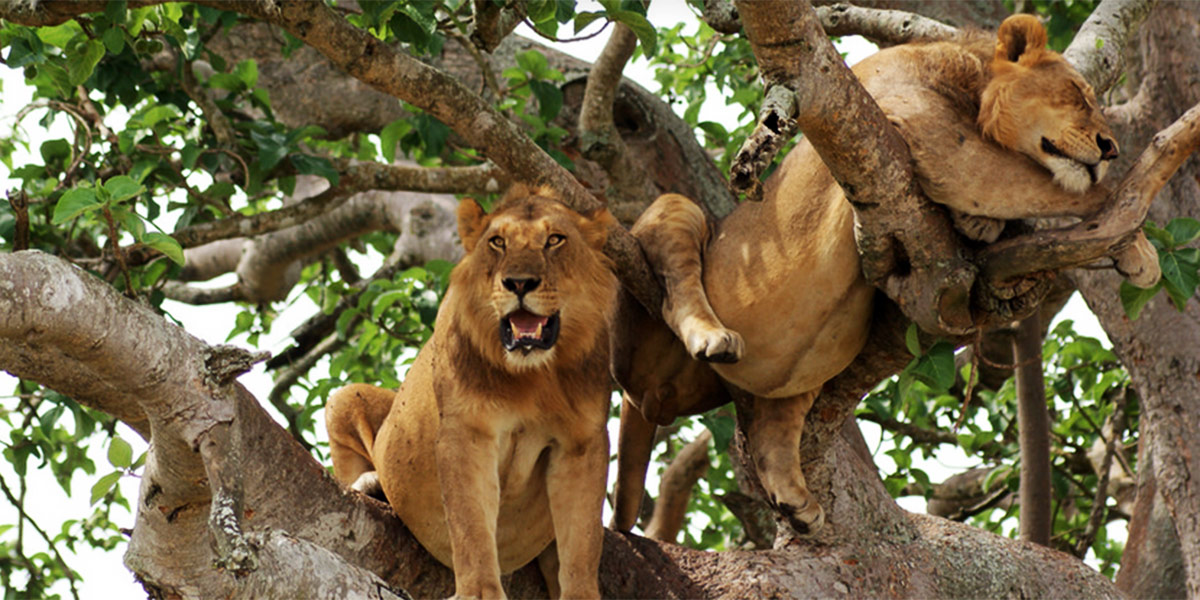
Murchison Falls National Park: The Power of the Nile
Murchison Falls National Park is another iconic destination in Uganda. It is known for the dramatic Murchison Falls where the Nile River explodes through a narrow gorge and plunges 43 meters below. The park is the largest in Uganda and offers a variety of wildlife experiences. These include: game drives, boat cruises on the Nile, and guided nature walks.
The park is home to over 76 species of mammals, including elephants, giraffes, lions, and the elusive shoebill stork. This is highly sought after by bird enthusiasts. The Nile River is a focal point of any visit to Murchison Falls National Park, with boat cruises providing opportunities to see the falls up close. Also, to spot wildlife along the riverbanks. The combination of powerful waterfalls, rich wildlife, and stunning landscapes makes Murchison Falls National Park a must-visit for anyone exploring Uganda in 2025.
Kibale Forest National Park: The Primate Capital of the World
Kibale Forest National Park is a paradise for primate lovers and is often referred to as the “Primate Capital of the World.” The park is home to 13 species of primates, including chimpanzees, red colobus monkeys, L’Hoest’s monkeys, and the rare Ugandan mangabey. Chimpanzee tracking is the most popular activity in Kibale. It offers visitors the chance to observe these intelligent and social animals in their natural habitat.
The park’s diverse ecosystems also support a variety of other wildlife, including forest elephants, buffaloes, and over 375 species of birds. Guided nature walks through the forest allow visitors to immerse themselves in the lush surroundings. Also, to discover the rich biodiversity of the park. Kibale’s proximity to other national parks, such as Queen Elizabeth and Semuliki, makes it an ideal addition to any wildlife safari in Uganda.
Kidepo Valley National Park: Uganda’s Hidden Gem
For those seeking an off-the-beaten-path adventure. Kidepo Valley National Park is a hidden gem in the remote northeastern corner of Uganda. The park’s rugged landscapes, characterized by vast savannahs, rocky outcrops, and distant mountains. These create a sense of wild isolation that is hard to find elsewhere. Kidepo is one of Uganda’s most spectacular parks, yet it remains relatively undiscovered by tourists. Therefore offering a truly authentic safari experience.
Kidepo Valley National Park is home to a variety of wildlife, including lions, cheetahs, elephants, zebras, and over 470 species of birds. The park’s unique location near the borders of South Sudan and Kenya adds to its allure. Visitors can explore the Kidepo and Narus valleys. These are rich in wildlife and provide stunning views of the surrounding landscapes. A visit to Kidepo is a journey into Uganda’s wild frontier, where the beauty of nature and the tranquility of the wilderness reign supreme.
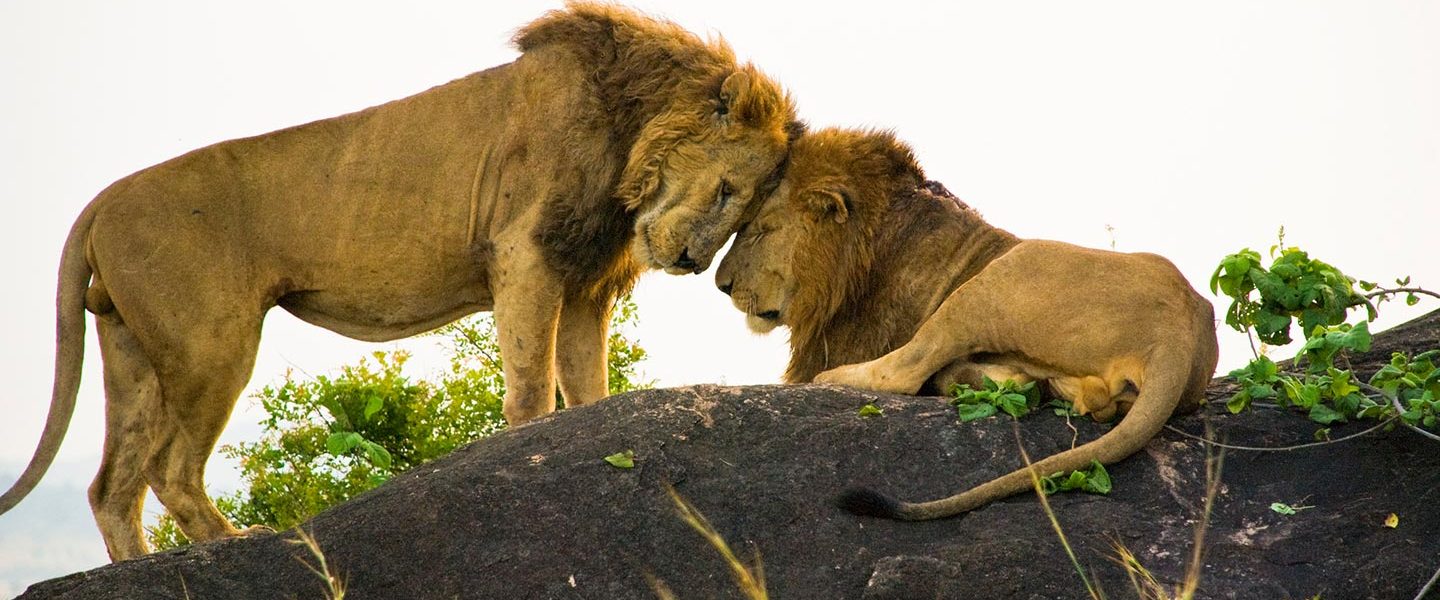
Cultural Experiences and Community Tourism in Uganda
Engaging with Local Communities
Uganda’s rich cultural heritage is an integral part of any visit to the country. There are numerous opportunities to engage with local communities and learn about their traditions and way of life. Many national parks in Uganda are located near communities that offer cultural experiences. These include traditional dances, craft-making demonstrations, and homestays.
In Bwindi, visitors can learn about the Batwa people, one of the oldest indigenous groups in Uganda. These have lived in harmony with the forest for centuries. The Batwa Experience is a cultural program that allows visitors to learn about the Batwa’s traditional way of life, including hunting, gathering, and the use of medicinal plants. The program also highlights the challenges faced by the Batwa since they were evicted from the forest to protect the gorillas. Also on how tourism is helping to support their community.
In Queen Elizabeth National Park
In Queen Elizabeth National Park, the Kikorongo Women’s Community offers a range of cultural experiences. These include traditional music and dance performances, storytelling sessions, and workshops on making crafts from natural materials. These experiences provide insight into the lives of the local people and the role of women in the community. This is while also contributing to the sustainability of their livelihoods.
Supporting Sustainable Tourism
Sustainable tourism is a key focus in Uganda. Many tour operators and lodges are committed to minimizing their impact on the environment and supporting local communities. Choosing responsible travel options is an important way for visitors to contribute to the conservation of Uganda’s natural and cultural heritage.
Several lodges in Uganda are involved in community development projects. These include; supporting local schools, providing healthcare services, and promoting conservation education. By staying at these lodges, visitors can directly support these initiatives and help make a positive impact on the local communities.
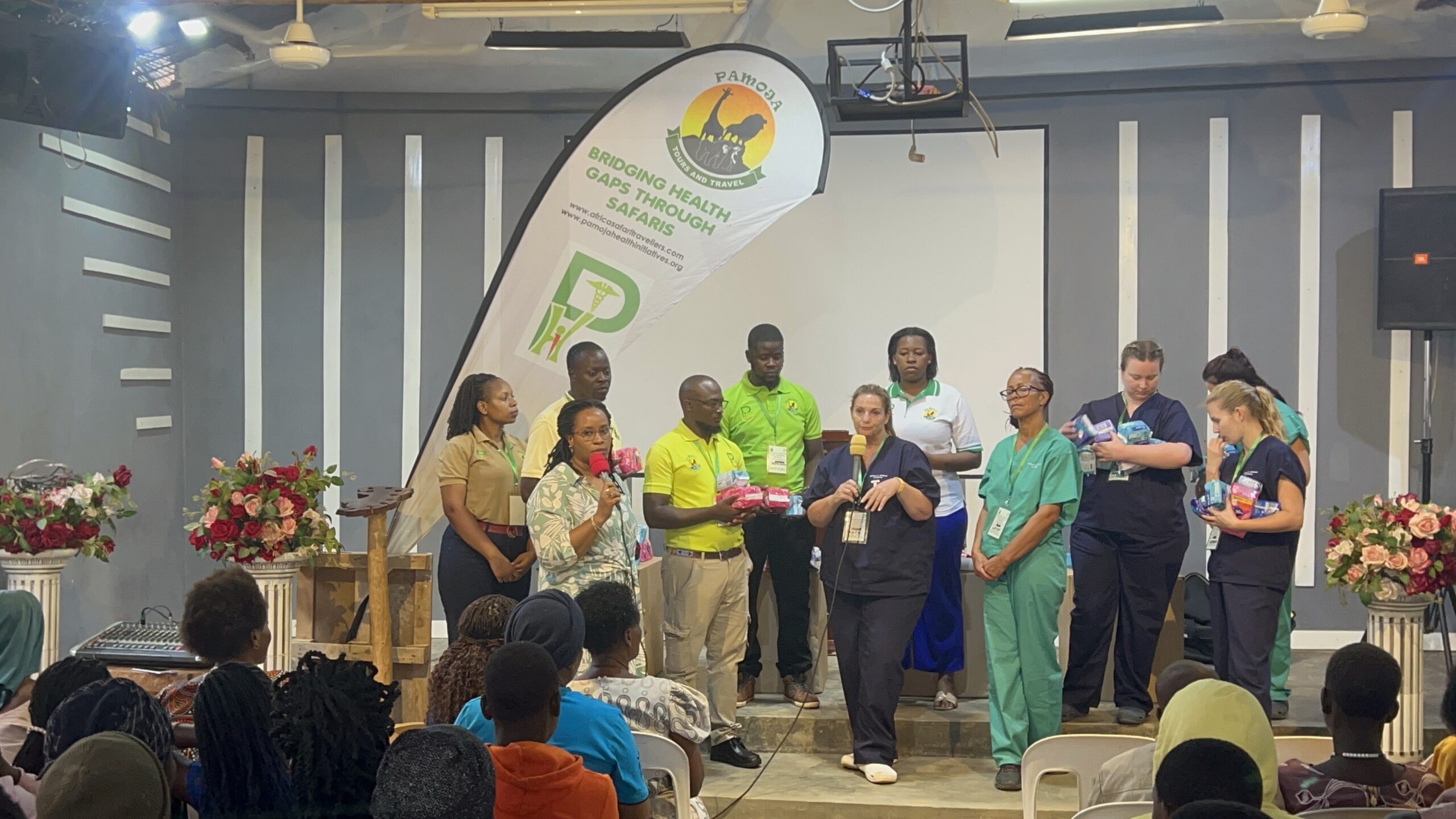
Tourists can also contribute to sustainability by participating in eco-friendly activities, such as guided nature walks, birdwatching, and cultural tours. These activities not only offer a deeper connection to the environment and culture but also help to spread the economic benefits of tourism to a wider range of people.
Planning Your Uganda Wildlife Safari in 2025
Choosing the Right Tour Operator
Selecting the right tour operator is crucial to ensuring a successful and enjoyable safari in Uganda. Many tour operators offer customized packages that cater to different interests, budgets, and travel styles. When choosing a tour operator, it’s important to consider their experience, reputation, and commitment to sustainability.

Look for tour operators that are members of reputable tourism associations, such as the Association of Uganda Tour Operators (AUTO) or the Uganda Tourism Board (UTB). These organizations promote high standards of service and ethical practices in the tourism industry. Additionally, reading reviews and testimonials from previous clients can provide valuable insights into the quality of service offered by a tour operator.
When planning,
When planning your safari, consider whether you prefer a fully guided tour or a self-drive adventure. Guided tours offer the advantage of expert knowledge and local insights, while self-drive safaris provide more flexibility and independence. Many tour operators also offer small group tours, which can be a great way to meet like-minded travelers and share the experience.
Packing Essentials for Your Safari
Packing the right gear is essential for a successful safari in Uganda. The climate in Uganda can vary depending on the region and time of year. So it’s important to be prepared for different weather conditions. Lightweight, breathable clothing is recommended for the hot and humid lowlands. While warmer layers are needed for the cooler highlands. This is especially during early morning and evening game drives.
Sturdy hiking boots are a must for gorilla trekking and other outdoor activities. This is because the terrain can be rugged and challenging. A waterproof jacket and trousers are also recommended. Rain showers can occur at any time, especially in the rainforests. Other essential items include a wide-brimmed hat, sunglasses, sunscreen, insect repellent, and a good quality camera. Also, with extra batteries and memory cards.
Other things to pack
Binoculars are also a valuable tool for wildlife viewing, allowing you to get a closer look at animals without disturbing them. For those interested in birdwatching, a bird identification guide specific to East Africa is highly recommended. Additionally, bringing a reusable water bottle and eco-friendly toiletries can help reduce your environmental impact during your trip.
Health and Safety Considerations
When traveling to Uganda, it’s important to take certain health and safety precautions to ensure a safe and enjoyable trip. Visitors are advised to consult their healthcare provider before traveling to Uganda to discuss vaccinations and any necessary medications. Common vaccinations recommended for Uganda include those for yellow fever, hepatitis A and B, typhoid, and meningitis. A yellow fever vaccination certificate is required for entry into Uganda.
Malaria is present in Uganda, so taking antimalarial medication and using insect repellent is highly recommended. Wearing long-sleeved clothing and sleeping under a mosquito net can also help prevent mosquito bites. In addition to malaria, travelers should be aware of the risk of other insect-borne diseases, such as dengue fever and chikungunya, and take appropriate precautions.
Safety
Safety is generally not a concern for tourists in Uganda, especially in popular tourist areas and national parks. However, it’s always wise to exercise caution and follow the advice of your tour guide or local authorities. When driving, be aware of road conditions and local traffic laws, and avoid traveling at night in remote areas.
Conclusion: Embark on Your Uganda Adventure in 2025
As 2025 approaches, Uganda continues to stand out as one of Africa’s premier destinations for wildlife and adventure tourism. From the awe-inspiring experience of gorilla trekking in Bwindi Impenetrable National Park. To the thrilling game drives in Queen Elizabeth and Murchison Falls National Parks. Uganda offers a diverse range of experiences that cater to all types of travelers.
Whether you’re seeking an intimate encounter with mountain gorillas, a classic savannah safari. Or a journey into the remote wilderness of Kidepo Valley, Uganda has something to offer everyone. The country’s commitment to conservation and sustainable tourism ensures that these natural treasures will be preserved for future generations to enjoy.
As you plan your safari to Uganda in 2025, remember to consider the unique aspects of each destination. Choose a responsible tour operator, and prepare adequately for your adventure. With its breathtaking landscapes, rich wildlife, and warm hospitality. Uganda is a destination that promises unforgettable memories and a deep connection to the natural world.
Embark on your Uganda adventure in 2025, and discover why this beautiful country truly is the Pearl of Africa.


